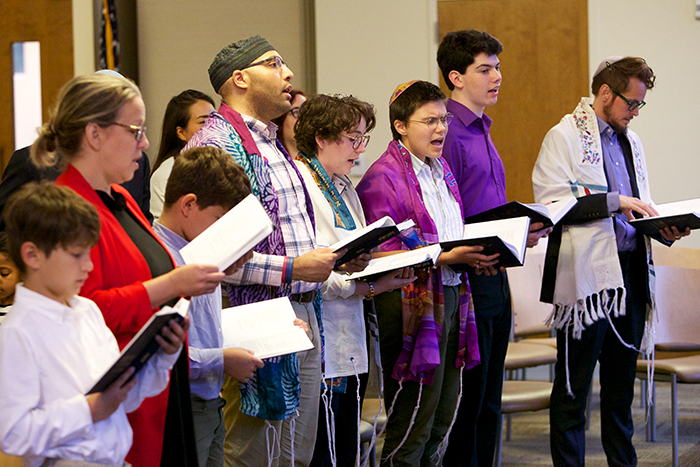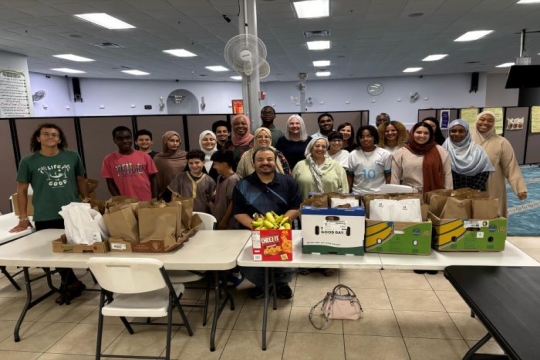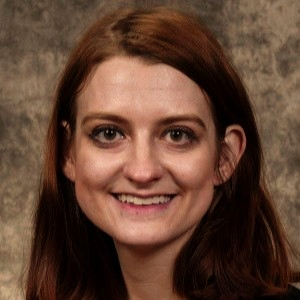
The URJ serves 501 small congregations of 250 or fewer households throughout North America. Though small, these communities are vital to the North American Reform Movement. Whether merging with congregations from other movements or deepening sacred partnerships, these communities show that size does not equal impact. Their collaboration, connection, and creativity show the power of resilience and partnership in the Reform Movement. In Indiana and Ohio, Reform and Conservative congregations have merged to strengthen Jewish life in their communities, while in Washington State, a small congregation outside of Seattle is deepening sacred partnerships and showcasing the power of connection.
Partnering with Each Other, God, and the Reform Movement
In Des Moines, Washington, Congregation Bet Chaverim is using URJ resources and implementing principles of sacred partnership to connect with each other and URJ congregations across the country. Rabbi James Mirel and congregational president Geoff Groshong both spoke on a panel at the URJ’s January 2025 Leadership Bootcamp and shared their thoughts about cultivating sacred partnerships. Rabbi Mirel shared that being part of the URJ has allowed the congregation to build relationships, maintain connections across the country, and be part of something big.
Rabbi Mirel believes that the real sacred partnership is between the congregation and God, leaders are just there to facilitate it. Thus, the leadership structure at Congregation Bet Chaverim values the voices of all members. He explained, “I personally respect everyone’s point of view and feel they should be heard. We all share equal responsibility [in our mission] to be a kehillah kedosha, a holy congregation.”
Rabbi Mirel has seen that one strength of small congregations is interpersonal relationships: “The main thing is that we love each other. As the rabbi, I don’t just love the congregation collectively; I love each individual person. That’s what binds us together.”
Combining Congregations, Building Belonging
In Youngstown, Ohio, Congregation Ohev Beth Sholom is showing the power of collaboration to strengthen the broader Jewish community.
Formerly known as Congregation Rodef Sholom, this Reform congregation predated the URJ by six years, with records going back to 1867 and a building dating back to 1914. When the congregation was negotiating a merger with Ohev Tzedek-Shaarei Torah (also known simply as Ohev Tzedek), a Conservative congregation, it was important to the members of Rodef Sholom that the resulting community would remain in the historic building.
In 2013, Congregation Rodef Sholom merged with the nearby Reform congregation Beth Israel. When the merger with Ohev Tzedek was finalized, the congregation's name was changed to reflect all three communities. Part of the synagogue was remodeled to include parts of Ohev Tzedek’s old building; Ohev Tzedek’s stained glass became the highlight of a new lobby area, and the congregation’s memorial plaques were placed along the hallway leading to the chapel, as was their ner tamid (eternal light), merging the congregations physically and symbolically.
Executive Director Sarah Wilschek shared that, while the original congregations were from different movements, what mattered more were the people and the culture each congregation brought to the merger. Rabbi Courtney Berman agreed, explaining, "It's really about the people and what brings us together, not our differences." Wilschek said that she knew the merger was the right move when she, “was getting calls from [Rodef Sholom’s] representatives and [Ohev Tzedek's] representatives, and they were all excited about it.”
Congregation Ohev Beth Sholom continues to strengthen Youngstown’s Jewish community by allowing congregants to propose and take ownership of programming and creating a robust community for its young people, showing the power of resilience and nurturing the Jewish identities of the next generation.
Collaborating to Thrive
In Fort Wayne, Indiana, Congregation Achduth Vesholom is a prime example of how collaborating and adapting allow congregations to thrive. Established in 1848, Congregation Achduth Vesholom is no stranger to evolving to meet the needs of the community. Originally established as a Orthodox German burial society, the congregation became affiliated with the Reform Movement in 1874, less than a year after the Union of American Hebrew Congregations (later named the Union for Reform Judaism) was established.
In 2019, members of Congregation Achduth Vesholom and B’nai Jacob, a Conservative egalitarian synagogue, voted to come together. Congregation Achduth Vesholom once again evolved to meet the needs of all congregants, beginning to offer traditional services right away. The new, unified congregation honors both Reform and Conservative traditions, offering services in both styles while remaining Reform in practice, affiliation, and philosophy. Rabbi Meir Bargeron shared that the congregation's relationship with the URJ has "helped [them] navigate large and small questions over time."
Like Congregation Ohev Beth Sholom, Congregation Achduth Vesholom incorporated artifacts from B’nai Jacob’s building into their newly renovated campus, including its ark and reading table, symbolically blending the histories of both communities into something new and unique.
The Congregation Achduth VeShalom and B’nai Jacob joining together has strengthened Fort Wayne’s Jewish community, fostering collaboration across organizations. Today, the congregation’s campus also houses the Jewish Federation of Fort Wayne, Purdue Fort Wayne’s Institute for Holocaust and Genocide Studies, and the Northeast Indiana Jewish Genealogy Society, becoming a vibrant hub of Jewish life and learning.
Rabbi Bargeron reflected, "Being small is our superpower; relationships drive our engagement. Our lifelong learning series, family Shabbat programs, and hands-on mitzvah projects invite every member to bring their full self. That intimacy is what keeps people learning, volunteering, and leading."
Congregation Achduth Vesholom's success proves that connection and evolution are at the heart of thriving Jewish communities everywhere.
Across North America, small congregations are proving that size does not define the strength or vitality of a community. Whether merging traditions to create something new and vibrant or deepening sacred partnerships, these congregations show that true strength lies in unity, flexibility, and connection. They embody the values of learning, evolving, belonging, and shared humanity that lie at the heart of our Movement and remind us that small congregations can have a big impact on the future of Judaism.
Related Posts

How URJ Congregations Spark Change and Innovation

Leadership Boot Camp: A Clean Page, Infinite Possibilities

